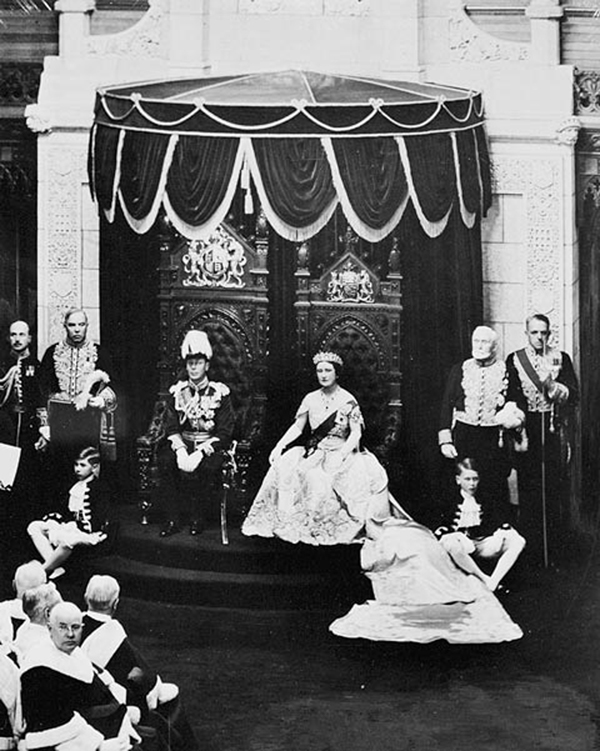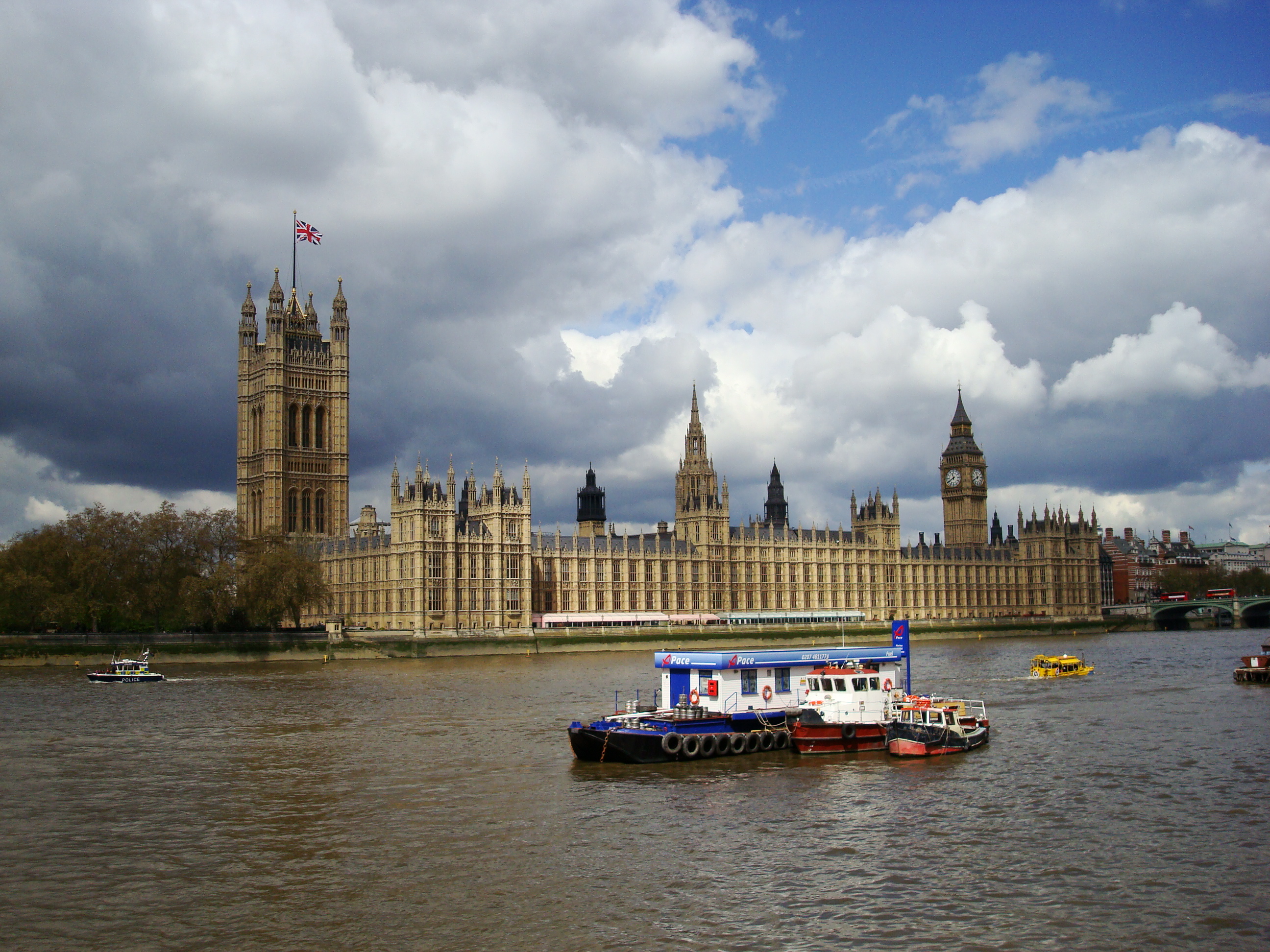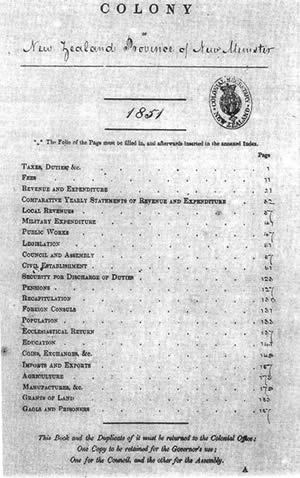|
New Zealand Constitution Act 1852
The New Zealand Constitution Act 1852 ( 15 & 16 Vict. c. 72) was an act of the Parliament of the United Kingdom that granted self-government to the Colony of New Zealand. It was the second such act, the New Zealand Constitution Act 1846 not having been fully implemented. The purpose of the act was to have constitutional independence from Britain. The definition of franchise or the ability to vote excluded all women, most Māori, all non-British people and those with convictions for serious offences. The act remained in force as part of New Zealand's constitution until it was rendered redundant by the Constitution Act 1986. The long title of the act was "An Act to Grant a Representative Constitution to the Colony of New Zealand". The act received royal assent on 30 June 1852. Background In 1850, New Zealand was being governed as a Crown Colony. This style of government was increasingly inadequate in light of changing circumstances. The rapid demographic changes as new imm ... [...More Info...] [...Related Items...] OR: [Wikipedia] [Google] [Baidu] |
Short Title
In certain jurisdictions, including the United Kingdom and other Westminster system, Westminster-influenced jurisdictions (such as Canada or Australia), as well as the United States and the Philippines, primary legislation has both a short title and a long title. The long title (properly, the title in some jurisdictions) is the formal title appearing at the head of a statute (such as an act of Parliament or of act of Congress, Congress) or other legislative instrument. The long title is intended to provide a summarised description of the purpose or scope of the instrument. Like other descriptive components of an act (such as the preamble, section headings, side notes, and short title), the long title seldom affects the operative provisions of an act, except where the operative provisions are unclear or ambiguous and the long title provides a clear statement of the legislature's intention. The short title is the formal name by which legislation may by law be Legal citation, cited. I ... [...More Info...] [...Related Items...] OR: [Wikipedia] [Google] [Baidu] |
Royal Assent
Royal assent is the method by which a monarch formally approves an act of the legislature, either directly or through an official acting on the monarch's behalf. In some jurisdictions, royal assent is equivalent to promulgation, while in others that is a separate step. Under a modern constitutional monarchy, royal assent is considered little more than a formality. Even in nations such as the United Kingdom, Norway, the Netherlands, Liechtenstein and Monaco which still, in theory, permit their monarch to withhold assent to laws, the monarch almost never does so, except in a dire political emergency or on advice of government. While the power to veto by withholding royal assent was once exercised often by European monarchs, such an occurrence has been very rare since the eighteenth century. Royal assent is typically associated with elaborate ceremony. In the United Kingdom the Sovereign may appear personally in the House of Lords or may appoint Lords Commissioners, who anno ... [...More Info...] [...Related Items...] OR: [Wikipedia] [Google] [Baidu] |
Governor-General Of New Zealand
The governor-general of New Zealand () is the representative of the monarch of New Zealand, currently King Charles III. As the King is concurrently the monarch of 14 other Commonwealth realms and lives in the United Kingdom, he, on the Advice (constitutional), advice of his New Zealand prime minister, appoints a governor-general to carry out his constitutional and ceremonial duties within New Zealand. Governors-general typically serve a five-year term of office, subject to a possible short extension, though they formally serve "At His Majesty's pleasure, at the monarch's pleasure". The incumbent governor-general is Dame Cindy Kiro, since 21 October 2021. Administrative support for the governor-general is provided by the Department of the Prime Minister and Cabinet (New Zealand), Department of the Prime Minister and Cabinet. Constitutional functions include presiding over the Executive Council of New Zealand, Executive Council, appointing Ministers in the New Zealand Government ... [...More Info...] [...Related Items...] OR: [Wikipedia] [Google] [Baidu] |
New Zealand Parliament
The New Zealand Parliament () is the unicameral legislature of New Zealand, consisting of the Monarchy of New Zealand, Sovereign and the New Zealand House of Representatives. The King is usually represented by his Governor-General of New Zealand, governor-general. Before 1951, there was an upper chamber, the New Zealand Legislative Council. The New Zealand Parliament was established in 1854 and is one of the oldest continuously functioning legislatures in the world. It has met in Wellington, the capital of New Zealand, since 1865 and in its Parliament House, Wellington, current building since 1922. The House of Representatives normally consists of 120 members of Parliament (MPs), though sometimes more due to overhang seats. There are 72 MPs elected directly in New Zealand electorates, electorates while the remainder of seats are assigned to list MPs based on each List of political parties in New Zealand, party's share of the total party vote. Māori people, Māori were represe ... [...More Info...] [...Related Items...] OR: [Wikipedia] [Google] [Baidu] |
Bicameralism
Bicameralism is a type of legislature that is divided into two separate Deliberative assembly, assemblies, chambers, or houses, known as a bicameral legislature. Bicameralism is distinguished from unicameralism, in which all members deliberate and vote as a single group. , roughly 40% of the world's national legislatures are bicameral, while unicameralism represents 60% nationally and much more at the subnational level. Often, the members of the two chambers are elected or selected by different methods, which vary from Jurisdiction (area), jurisdiction to jurisdiction. This can often lead to the two chambers having very different compositions of members. Enactment of a bill, Enactment of primary legislation often requires a concurrent majority—the approval of a majority of members in each of the chambers of the legislature. When this is the case, the legislature may be called an example of perfect bicameralism. However, in many parliamentary and semi-presidential systems, th ... [...More Info...] [...Related Items...] OR: [Wikipedia] [Google] [Baidu] |
New Zealand Provinces 1852
New or NEW may refer to: Music * New, singer of K-pop group The Boyz * ''New'' (album), by Paul McCartney, 2013 ** "New" (Paul McCartney song), 2013 * ''New'' (EP), by Regurgitator, 1995 * "New" (Daya song), 2017 * "New" (No Doubt song), 1999 * "new", a song by Loona from the 2017 single album '' Yves'' * "The New", a song by Interpol from the 2002 album ''Turn On the Bright Lights'' Transportation * Lakefront Airport, New Orleans, U.S., IATA airport code NEW * Newcraighall railway station, Scotland, station code NEW Other uses * ''New'' (film), a 2004 Tamil movie * New (surname), an English family name * NEW (TV station), in Australia * new and delete (C++), in the computer programming language * Net economic welfare, a proposed macroeconomic indicator * Net explosive weight, also known as net explosive quantity * Network of enlightened Women, an American organization * Newar language, ISO 639-2/3 language code new * Next Entertainment World, a South Korean media company ... [...More Info...] [...Related Items...] OR: [Wikipedia] [Google] [Baidu] |
Mount Ruapehu
Mount Ruapehu (; English ) is an active stratovolcano at the southern end of the Taupō Volcanic Zone and North Island North Island Volcanic Plateau, volcanic plateau in New Zealand. It is northeast of Ohakune and southwest of the southern shore of Lake Taupō, within Tongariro National Park. The North Island's major ski resorts and only glaciers are on its slopes. Ruapehu, the largest active volcano in New Zealand, has the highest point in the North Island and has three major peaks: Tahurangi (2,797 m), Te Heuheu (2,755 m) and Paretetaitonga (2,751 m). The deep, active volcanic crater, crater is between the peaks and fills with water between major eruptions, being known as Crater Lake (). The name ''Ruapehu'' means "pit of noise" or "exploding pit" in Māori language, Māori. Geography Ruapehu is located in the centre of the North Island of New Zealand, northeast of Ohakune, New Zealand, and southwest of the southern shore of Lake Taupō, within Tongariro ... [...More Info...] [...Related Items...] OR: [Wikipedia] [Google] [Baidu] |
New Munster Province
New Munster was an early original European name for the South Island of New Zealand, given by the Governor of New Zealand, Captain William Hobson, in honour of Munster, the Irish province in which he was born. Province When New Zealand was separated from the Colony of New South Wales in 1841 and established as a colony in its own right, the Royal Charter of 1840 effecting this provided that "the principal Islands, heretofore known as, or commonly called, the 'Northern Island', the 'Middle Island', and 'Stewart's Island', shall henceforward be designated and known respectively as ' New Ulster', 'New Munster', and ' New Leinster'". These divisions were at first of geographical significance only, not used as a basis for the government of the colony, which was centralised in Auckland. New Munster referred solely to the South Island. The situation was altered in 1846 when the New Zealand Constitution Act 1846 divided the colony into two provinces: New Ulster and New Munster. New ... [...More Info...] [...Related Items...] OR: [Wikipedia] [Google] [Baidu] |
New Ulster Province
New Ulster was a province of the Colony of New Zealand that existed between 1841 and 1853. It was named after the Irish province of Ulster. Creation Between 1841 and 1846, the province included all the North Island. With the passing of the New Zealand Constitution Act 1846, the province was defined as the North Island north of the Pātea River mouth. Like the other province of New Zealand at the time, New Munster Province, New Ulster Province was headed by a Lieutenant-Governor who reported to the Governor of New Zealand. Abolition In 1852, a new Constitution Act was passed, and the New Ulster province was abolished and divided into Auckland Province, part of the Wellington Province and New Plymouth province (later Taranaki Province). Lieutenant-Governors * George Dean Pitt Major General George Dean Pitt (1781 or 1772 – 8 January 1851) was Lieutenant-Governor of the former New Zealand Province of New Ulster from 14 February 1848 to his death on 8 January 1851. ... [...More Info...] [...Related Items...] OR: [Wikipedia] [Google] [Baidu] |
George Grey
Sir George Grey, KCB (14 April 1812 – 19 September 1898) was a British soldier, explorer, colonial administrator and writer. He served in a succession of governing positions: Governor of South Australia, twice Governor of New Zealand, Governor of Cape Colony, and the 11th premier of New Zealand. He played a key role in the colonisation of New Zealand, and both the purchase and annexation of Māori land. Grey was born in Lisbon, Portugal, just a few days after his father, Lieutenant-Colonel George Grey, was killed at the Battle of Badajoz in Spain. He was educated in England. After military service (1829–37) and two explorations in Western Australia (1837–39), Grey became Governor of South Australia in 1841. He oversaw the colony during a difficult formative period. Despite being less hands-on than his predecessor George Gawler, his fiscally responsible measures ensured the colony was in good shape by the time he departed for New Zealand in 1845.G. H. Pitt, "The Cr ... [...More Info...] [...Related Items...] OR: [Wikipedia] [Google] [Baidu] |
William Hobson
Captain William Hobson (26 September 1792 – 10 September 1842) was an Anglo-Irish officer in the British Royal Navy, who served as the first Governor of New Zealand. He was a co-author of the Treaty of Waitangi. Hobson was dispatched from London in July 1839, with instructions to take the constitutional steps needed to establish a British colony in New Zealand. He was sworn in as Lieutenant-Governor in Sydney (under George Gipps) and arrived in New Zealand on 29 January 1840. On 5 February 1840, Hobson met with Māori chiefs at Waitangi, and the following morning they signed a treaty by which the chiefs purportedly voluntarily transferred sovereignty to the British Crown in return for guarantees respecting their lands and possessions and their rights as British subjects. Three months later, Hobson proclaimed British sovereignty over the islands of New Zealand. He also selected the site for a new capital, which he named Auckland. In May 1841, New Zealand was constit ... [...More Info...] [...Related Items...] OR: [Wikipedia] [Google] [Baidu] |
Rebellions Of 1837–1838
The Rebellions of 1837–1838 (), were two armed rebellion, uprisings that took place in Lower Canada, Lower and Upper Canada in 1837 and 1838. Both rebellions were motivated by frustrations with lack of political reform. A key shared goal was responsible government, which was eventually achieved in the incidents' aftermath. The rebellions led directly to John Lambton, 1st Earl of Durham, Lord Durham's Report on the Affairs of British North America and to the Act of Union 1840 which partially reformed the British provinces into a unitary system and eventually led to the British North America Act, 1867, ''Constitution Act, 1867'', which created Canadian federalism, the contemporary Canadian federation and Government of Canada, its government. Atlantic context Some historians contend that the rebellions in 1837 ought to be viewed in the wider context of the late-18th- and early-19th-century Atlantic Revolutions. The American Revolutionary War of 1775–1783, the French Revolution o ... [...More Info...] [...Related Items...] OR: [Wikipedia] [Google] [Baidu] |







